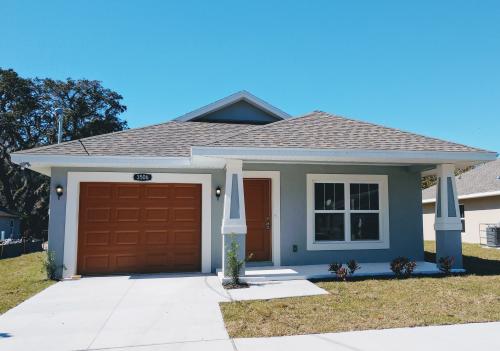
East Tampa | Tampa Florida
Corporation to Develop Communities of East Tampa

An economic mobility plan aims to empower Black legacy residents as developers, investors and vested stakeholders in East Tampa’s future.
The Challenge
East Tampa was a thriving enclave of Black life during segregation, despite grinding poverty for many. One of the few parts of Hillsborough County where African Americans could live, East Tampa was home to Tampa’s largest group of Black residents. It was also a bustling Main Street of Black-owned businesses.
But like many legacy communities, East Tampa suffered three decades of disinvestment. Urban renewal unfolded as desegregation hallowed out the once captive Black consumer market that fueled the growth of Black-owned businesses.
From 1990 to 2000, East Tampa lost 11% of its population. By 2000, 15% of the neighborhood’s residential parcels stood vacant.
In sharp contrast, the past 20 years have brought a solid pace of gentrification and displacement, with home prices rising and investment buying continuing at a steady clip. The trends have altered the resident profile in East Tampa. Today, less than half the properties are owner-occupied.
To reverse the pattern, the Corporation to Develop Communities of Tampa has embarked on a bold economic mobility plan. Key elements of the plan focus on empowering resident property owners – and East Tampa legacies – as developers, investors and vested stakeholders in the community’s future.

The Plan
Corporation to Develop Communities of East Tampa seeks to grow the upward mobility of over 750 Black residents who live, work and own property in East Tampa. The plan – already underway – is called the Nehemiah Legacy Project. Fifth Third’s investment allows for new innovations that will accelerate the plan’s impact and results.
The Nehemiah Legacy Project coordinates the work of two dozen cross-sector partners across six impact areas:
- Affordable housing
- Commercial development
- Small business growth
- Home buyer development
- Workforce Development
- Asset growth
Loans will be deployed to three markets: mortgage, small business and commercial. Development goals include 324 affordable homes and 100,000 square feet of new commercial space to bring more entrepreneurs into office and retail spaces.
The plan will help families prepare for and realize the dream of homeownership. A business growth program will show entrepreneurs how to increase their credit capacity and revenue. And a career ladder program will give residents the skills and agency to secure higher paying jobs.
Among the plan’s anti-displacement strategies is the Legacy Developers Collaborative. The collaborative’s turnkey services will equip East Tampa’s residential and commercial property owners with the know-how and resources to take charge of developing or redeveloping their properties. That will allow them to benefit from the continued operation or future sale of improved properties – rather than feeling forced to sell.
“We’re already doing a lot of great work. Having the resources
and amazing partnership of Fifth Third and Enterprise to help us
go to scale and bring a vision co-created with residents to fruition is truly exciting.”
– Ernest Coney Jr., CEO & President,
Corporation to Develop Communities of East Tampa
What Success Looks Like
The Nehemiah Legacy Project aims to generate enough momentum to create a tipping point for economic equity in East Tampa within three years.
To get there, the plan seeks to:
- Accelerate affordable housing development by 25% and community-led commercial development by 60%
- Achieve 33% increase in Black entrepreneurs engaged in intensive growth programs
- Spur new construction of 324 affordable homes for families at or below 140% AMI
- Produce 100,000 square feet of new commercial space that bridges more entrepreneurs into traditional and micro-office, retail and food service spaces
Over the next 10 years, the plan projects 90% commercial occupancy along key business corridors, 500,000 square feet of new space and 2,000 new affordable homes.
Within the next 25 years, the goal is clear and straightforward: eliminate race-based gaps for East Tampa’s Black residents in two areas: worker earnings and homeownership.

